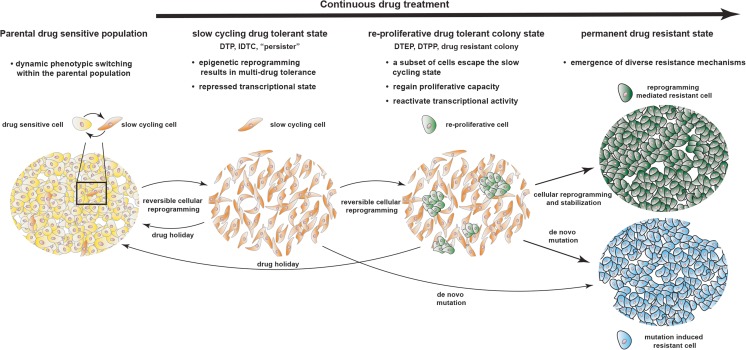Fig. 2.
Proposed model for the development of acquired drug resistance. A small subset of the parental drug sensitive population undergoes consistent transcriptional reprogramming resulting in phenotypic switching between a proliferative, drug sensitive and a slow cycling drug resistant state. Treatment with targeted therapy or chemotherapy will initially facilitate cellular reprogramming towards the slow cycling drug tolerant phenotype, characterized by repressed transcriptional activity that has been described using different terms in the literature, including drug tolerant persisters (DTP), induced drug tolerant cells (IDTC) or persisters. Continuous drug exposure will eventually lead to reactivation of transcriptional activity in a subset of the slow cycling population, which allows regain of proliferative capacity resulting the the formation of proliferative colonies. This state has been described using terms including drug tolerant expanded persisters (DTEP), drug tolerant proliferating persisters (DTEPP) or drug resistant colonies. These re-proliferative colonies will further stabilize their drug tolerant transcriptional profile to become permanent drug resistant. Alternatively, cells at the slow cycling or colony state acquire de novo mutations during the adaptive transition to become permanently drug resistant

